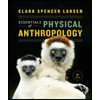Draft history question
pdf
keyboard_arrow_up
School
University of Pretoria *
*We aren’t endorsed by this school
Course
110
Subject
Anthropology
Date
Nov 24, 2024
Type
Pages
2
Uploaded by 1Student123456789
Question 1
Discuss the extent to which the application of eugenics and Social Darwinism
threatened the continued existence of the indigenous people of Australia and
indicate whether this amounted to genocide or not.
Fact sheet to mention
MAIN ASPECTS
INTRODUCTION
Introduction should focus on the application and impact of eugenics and Social Darwinism in
Australia by the white settler population. A definition of each of these concepts may be accepted.
The candidates must demonstrate understanding of the link between these policies and the near
extinction of the Aboriginal people of Australia and express a view whether this amounted to
genocide or not.
ELABORATION
•
British colonisation and occupation of Australia.
•
Policy of an ‘empty land’ – terra nullius.
•
Persecution of the Aboriginal communities.
•
Application of eugenics policies on the Aborigines.
•
The land question and the National Blanket Day.
•
White immigration from Europe.
•
White mothers encouraged to have more children – five pounds for each white child
born.
•
Racial decay and racial suicide – influencing immigration policies.
•
Policy of assimilation.
•
The Stolen Generation – half-caste children.
•
Lost identity.
•
Genocide – a generation of Aborigines decimated.
•
Attempts at reconciliation – National Sorry Day, rejection of the terra nullius policy.
Simple Draft
Must be substantiated and signposting
Title: The Impact of Eugenics and Social Darwinism on Indigenous Australians: A Examination of
Genocidal Threats
Introduction: The historical treatment of indigenous peoples globally has been characterised by a
sequence of unfair actions, and the use of eugenics and Social Darwinism in Australia is no different.
This article examines the degree to which these ideas posed a risk to the ongoing survival of the
indigenous population of Australia, investigating if these practises may be considered as genocide.
Paragraph 1 - Eugenics in Australia: Eugenics, the ideology centred on enhancing the hereditary
characteristics of a human population, gained momentum throughout the early 20th century and
was included into Australian governmental measures.
The use of eugenic measures, such as
compulsory sterilisations and the separation of indigenous children from their families, was intended
to eliminate perceived undesirable characteristics among the indigenous community.
The deliberate
intervention in the reproductive abilities of native people was a clear effort to influence the genetic
composition of future generations.
Paragraph 2 - The concept of Social Darwinism and its consequential influence:
The concept of Social Darwinism, which incorrectly applied Charles Darwin's theory of natural
selection, had a substantial impact on the development of discriminatory legislation targeting
indigenous Australians.
The notion that some races had superior adaptability for survival than
others contributed to biassed attitudes and laws that marginalised and oppressed indigenous
cultures.
The manifestation of Social Darwinist ideology may be seen in the denial of fundamental
rights, inequitable distribution of resources, and the coercive displacement of indigenous
communities.
Paragraph 3 - Endangerments to Ongoing Survival:
The convergence of eugenics and Social Darwinism presented a significant danger to the ongoing
survival of indigenous Australians.
The coerced separation of children from their families, often
referred to as the Stolen Generations, caused a disruption in the transmission of cultural practises, a
gradual erosion of ancestral wisdom, and ultimately led to a significant deprivation of indigenous
people' sense of self and belonging.
Moreover, the coerced sterilisations curtailed the capacity of
indigenous persons to form families and preserve their cultural legacy.
Paragraph 4 - Characteristics of Genocide:
The use of eugenics and Social Darwinism in Australia demonstrates traits that correspond to the
notion of genocide.
The deliberate implementation of measures with the goal of physically or
culturally annihilating a specific community, as defined by the United Nations Genocide Convention,
is clearly apparent in the systematic policies enforced against indigenous Australians.
Genocidal
actions include the destruction of cultural legacy, forced assimilation, and the intentional imposition
of circumstances that result in the actual annihilation of a people.
Conclusion: In summary, the implementation of eugenics and Social Darwinism in Australia
presented a substantial danger to the ongoing survival of the indigenous population, constituting a
kind of genocide.
The deliberate disintegration of indigenous traditions and the systematic
intervention in their reproductive capacity epitomised a sombre period in Australian history.
Recognising this past injustice is essential for promoting reconciliation, comprehension, and
guaranteeing a fairer and more comprehensive future for all Australians.
Your preview ends here
Eager to read complete document? Join bartleby learn and gain access to the full version
- Access to all documents
- Unlimited textbook solutions
- 24/7 expert homework help
Related Documents
Recommended textbooks for you

Essentials of Physical Anthropology (Third Editio...
Anthropology
ISBN:9780393938661
Author:Clark Spencer Larsen
Publisher:W. W. Norton & Company
Recommended textbooks for you
 Essentials of Physical Anthropology (Third Editio...AnthropologyISBN:9780393938661Author:Clark Spencer LarsenPublisher:W. W. Norton & Company
Essentials of Physical Anthropology (Third Editio...AnthropologyISBN:9780393938661Author:Clark Spencer LarsenPublisher:W. W. Norton & Company

Essentials of Physical Anthropology (Third Editio...
Anthropology
ISBN:9780393938661
Author:Clark Spencer Larsen
Publisher:W. W. Norton & Company